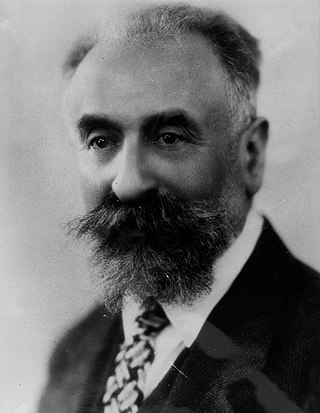A gift economy or gift culture is a system of exchange where valuables are not sold, but rather given without an explicit agreement for immediate or future rewards. Social norms and customs govern giving a gift in a gift culture; although there is some expectation of reciprocity, gifts are not given in an explicit exchange of goods or services for money, or some other good or service. This contrasts with a barter economy or a market economy, where goods and services are primarily explicitly exchanged for value received.

A potlatch is a gift-giving feast practiced by Indigenous peoples of the Pacific Northwest Coast of Canada and the United States, among whom it is traditionally the primary governmental institution, legislative body, and economic system. This includes the Heiltsuk, Haida, Nuxalk, Tlingit, Makah, Tsimshian, Nuu-chah-nulth, Kwakwaka'wakw, and Coast Salish cultures. Potlatches are also a common feature of the peoples of the Interior and of the Subarctic adjoining the Northwest Coast, although mostly without the elaborate ritual and gift-giving economy of the coastal peoples.
Economic anthropology is a field that attempts to explain human economic behavior in its widest historic, geographic and cultural scope. It is an amalgamation of economics and anthropology. It is practiced by anthropologists and has a complex relationship with the discipline of economics, of which it is highly critical. Its origins as a sub-field of anthropology began with work by the Polish founder of anthropology Bronislaw Malinowski and the French Marcel Mauss on the nature of reciprocity as an alternative to market exchange. For the most part, studies in economic anthropology focus on exchange.

Marcel Israël Mauss was a French sociologist and anthropologist known as the "father of French ethnology". The nephew of Émile Durkheim, Mauss, in his academic work, crossed the boundaries between sociology and anthropology. Today, he is perhaps better recognised for his influence on the latter discipline, particularly with respect to his analyses of topics such as magic, sacrifice and gift exchange in different cultures around the world. Mauss had a significant influence upon Claude Lévi-Strauss, the founder of structural anthropology. His most famous work is The Gift (1925).
In cultural anthropology, reciprocity refers to the non-market exchange of goods or labour ranging from direct barter to forms of gift exchange where a return is eventually expected as in the exchange of birthday gifts. It is thus distinct from the true gift, where no return is expected.

Kula, also known as the Kula exchange or Kula ring, is a ceremonial exchange system conducted in the Milne Bay Province of Papua New Guinea. The Kula ring was made famous by Bronisław Malinowski, considered the father of modern anthropology. He used this test case to argue for the universality of rational decision-making and for the cultural nature of the object of their effort. Malinowski's seminal work on the topic, Argonauts of the Western Pacific (1922), directly confronted the question, "Why would men risk life and limb to travel across huge expanses of dangerous ocean to give away what appear to be worthless trinkets?" Malinowski carefully traced the network of exchanges of bracelets and necklaces across the Trobriand Islands, and established that they were part of a system of exchange, and that this exchange system was clearly linked to political authority.

Maurice Godelier is a French anthropologist who works as a Director of Studies at the School for Advanced Studies in the Social Sciences. He is one of the most influential French anthropologists and is best known as one of the earliest advocates of Marxism's incorporation into anthropology. He is also known for his field work among the Baruya in Papua New Guinea from the 1960s to the 1980s.
The Gift: Forms and Functions of Exchange in Archaic Societies is a 1925 essay by the French sociologist Marcel Mauss that is the foundation of social theories of reciprocity and gift exchange.
Hau is a notion made popular by the French anthropologist Marcel Mauss in his 1925 book The Gift. Surveying the practice of gifting, he came to the conclusion that it involved belief in a force binding the receiver and giver. The term 'Hau', used by Māori, became a paradigmatic example for such a view. Writing at the turn of the century, Mauss relied on limited sources but his analysis has been expanded and refined.
Structural anthropology is a school of sociocultural anthropology based on Claude Lévi-Strauss' 1949 idea that immutable deep structures exist in all cultures, and consequently, that all cultural practices have homologous counterparts in other cultures, essentially that all cultures are equatable.
The Moka is a highly ritualized system of exchange in the Mount Hagen area, Papua New Guinea, that has become emblematic of the anthropological concepts of "gift economy" and of "Big man" political system. Moka are reciprocal gifts of pigs through which social status is achieved. Moka refers specifically to the increment in the size of the gift; giving more brings greater prestige to the giver. However, reciprocal gift giving was confused by early anthropologists with profit-seeking, as the lending and borrowing of money at interest.
Timeline of anthropology, 1990–1999

Sister exchange is a type of marriage agreement where two sets of siblings marry each other. In order to get married, a man needs to persuade his sister to marry the bride's brother. It is practised as a primary method of organising marriages in 3% of the world's societies: in Australia, Melanesia, Amazonia and Sub-Saharan Africa; and can replace other methods in 1.4% of the societies.
Nutritional anthropology is the study of the interplay between human biology, economic systems, nutritional status and food security. If economic and environmental changes in a community affect access to food, food security, and dietary health, then this interplay between culture and biology is in turn connected to broader historical and economic trends associated with globalization. Nutritional status affects overall health status, work performance potential, and the overall potential for economic development for any given group of people.
"Gifting remittances" describes a range of scholarly approaches relating remittances to anthropological literature on gift giving. The terms draws on Lisa Cliggett's "gift remitting", but is used to describe a wider body of work. Broadly speaking, remittances are the money, goods, services, and knowledge that migrants send back to their home communities or families. Remittances are typically considered as the economic transactions from migrants to those at home. While remittances are also a subject of international development and policy debate and sociological and economic literature, this article focuses on ties with literature on gifting and reciprocity or gift economy founded largely in the work of Marcel Mauss and Marshall Sahlins. While this entry focuses on remittances of money or goods, remittances also take the form of ideas and knowledge. For more on these, see Peggy Levitt's work on "social remittances" which she defines as "the ideas, behaviors, identities, and social capital that flow from receiving to sending country communities."
Several authors have used the terms organ gifting and "tissue gifting" to describe processes behind organ and tissue transfers that are not captured by more traditional terms such as donation and transplantation. The concept of "gift of life" in the U.S. refers to the fact that "transplantable organs must be given willingly, unselfishly, and anonymously, and any money that is exchanged is to be perceived as solely for operational costs, but never for the organs themselves". "Organ gifting" is proposed to contrast with organ commodification. The maintenance of a spirit of altruism in this context has been interpreted by some as a mechanism through which the economic relations behind organ/tissue production, distribution, and consumption can be disguised. Organ/tissue gifting differs from commodification in the sense that anonymity and social trust are emphasized to reduce the offer and request of monetary compensation. It is reasoned that the implementation of the gift-giving analogy to organ transactions shows greater respect for the diseased body, honors the donor, and transforms the transaction into a morally acceptable and desirable act that is borne out of voluntarism and altruism.
A commodity pathway diversion is the ability of an object to move in and out of the "commodity state" over the course of its use life. Diversions can occur when an object is removed from its commodity pathway for its protection and preservation, or when a previously removed object is commoditized through reentry into the commodity pathway after having gained value through its absence. Diversion is an integrated part of the commodity pathway.
This bibliography of anthropology lists some notable publications in the field of anthropology, including its various subfields. It is not comprehensive and continues to be developed. It also includes a number of works that are not by anthropologists but are relevant to the field, such as literary theory, sociology, psychology, and philosophical anthropology.
Annette Barbara Weiner née Cohen was one of the most prominent American cultural anthropologists, earning recognition as the President of the American Anthropological Association (1991-1993), Presidents of the Society for Cultural Anthropology (1987-1989), Chair of Anthropology (1981-1991). She also served as a Dean of Social Science (1993-1996), and Dean of the Graduate School of Arts and Science (1991-1996) at New York University. Early in her career, she taught at the University of Texas, Austin, and at Franklin and Marshall College. She the David B. Kriser Distinguished Professorship in Anthropology from 1984 until her death in 1997. She was known for her ethnographic work in the Trobriand Islands and her development of the concept of inalienable wealth in social anthropological theory.
Christopher A. Gregory is an Australian economic anthropologist. He is based at Australian National University (ANU) in Canberra, and has also taught at University of Manchester- where he was made Professor of Political and Economic Anthropology. He studied Economics at University of New South Wales and ANU before pursuing anthropology, following a period in Papua New Guinea. His main research has been in Papua New Guinea and Bastar District, central India, and he also co-authored a research methods manual for economic anthropology, 'Observing the Economy', with Jon Altman.







